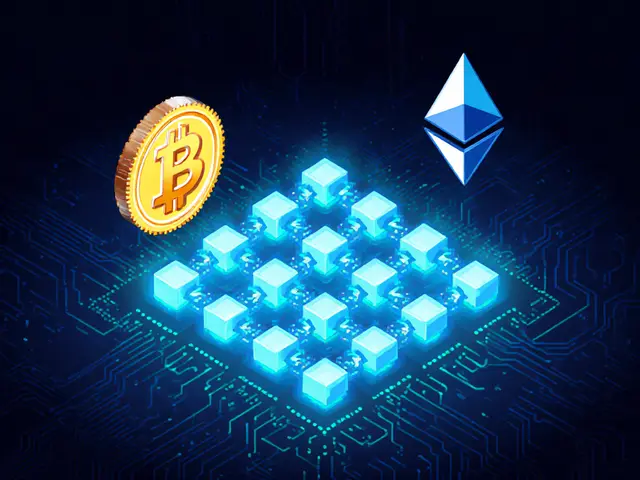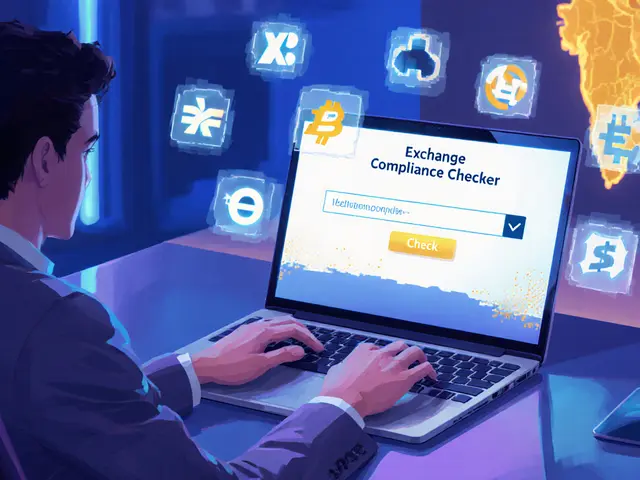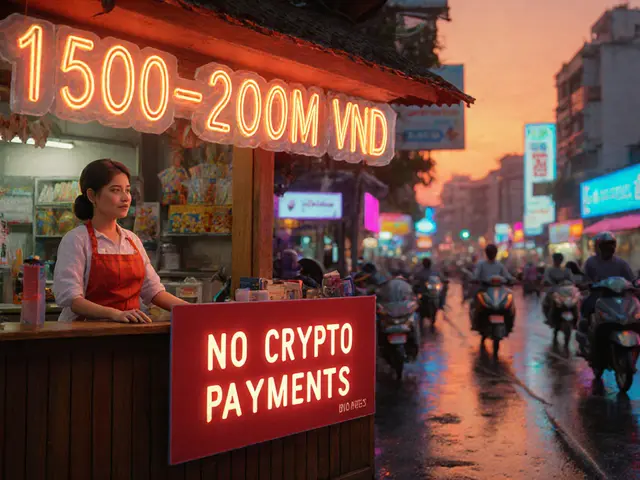Metaverse Platform Investment Calculator
Investment Analysis Results
Initial Investment: £0.00
Future Value: £0.00
Total Revenue: £0.00
Net Profit: £0.00
ROI: 0%
Annualized Return: 0%
Platform Overview
Decentraland
MANAPermanent ownership, no fees
Event tickets, NFT galleries, advertising
The Sandbox
SANDPermanent ownership, optional maintenance
Gaming venues, brand experiences, land leasing
Somnium Space
SOMPermanent ownership, low-cost upkeep
VR concerts, immersive education, rentals
CryptoVoxels
ETHPermanent ownership, optional monthly fees
Art galleries, virtual shops, social hubs
Upland
UPXPermanent ownership, no fees
Real-world property mash-ups, virtual tourism
Key Takeaways
- Virtual land is a scarce digital asset that can be bought, built on, and rented just like physical property.
- The biggest platforms in 2025 are Decentraland, The Sandbox, Somnium Space, CryptoVoxels, and Upland.
- To start, set up a crypto wallet, acquire the platform’s native token (MANA, SAND, etc.), and bid on parcels via the marketplace or auction.
- Revenue streams include gaming venues, event tickets, NFT galleries, virtual storefronts, and leasing.
- Risks - token volatility, platform dependence, and regulatory uncertainty - can be managed with diversification and thorough due‑diligence.
When the buzz around the metaverse real estate market hits a new peak, many wonder if virtual land is a fad or a genuine asset class. The short answer: it behaves a lot like traditional property, but the rules are written in code. Below you’ll find a step‑by‑step guide that lets you decide whether to dip a toe or buy a whole block, and how to turn that digital plot into cash flow.
Metaverse Real Estate Investment is the acquisition, development, and monetisation of tokenised land parcels inside blockchain‑based virtual worlds. Each parcel exists as a non‑fungible token (NFT) that proves ownership on a public ledger, meaning only one address can claim a plot at any given time - a digital echo of scarcity in physical real estate.
Why Virtual Land Is Treated Like Real Property
Just as a downtown lot commands higher rent because of foot traffic, a parcel next to a popular virtual concert venue attracts more visitors and can command premium rates. Location, size, and surrounding development matter, and the same market forces-supply, demand, and community sentiment-drive price swings.
Ownership is recorded on the blockchain, so buying a plot is akin to signing a deed. The NFT acts as the title, and the smart contract defines what you can build, whether you owe maintenance fees, and how revenue is split with the platform.
Major Platforms & Their Tokens
Unlike a single "metaverse", the ecosystem is a collection of independent worlds, each with its own token economy and development tools. Below is a quick comparison of the five platforms that dominate 2025.
| Platform | Native Token | Blockchain | Ownership Model | Key Monetisation Paths |
|---|---|---|---|---|
| Decentraland | MANA | Ethereum | Permanent ownership, no fees | Event tickets, NFT galleries, advertising |
| The Sandbox | SAND | Ethereum | Permanent ownership, optional maintenance | Gaming venues, brand experiences, land leasing |
| Somnium Space | SOM | Ethereum (layer‑2) | Permanent ownership, low‑cost upkeep | VR concerts, immersive education, rentals |
| CryptoVoxels | ETH (no native token) | Ethereum | Permanent ownership, optional monthly fees | Art galleries, virtual shops, social hubs |
| Upland | UPX | Ethereum (side‑chain) | Permanent ownership, no fees | Real‑world property mash‑ups, virtual tourism |
How to Get Started
- Set up a crypto wallet. MetaMask, Trust Wallet, or Coinbase Wallet work with most platforms. Ensure the wallet can hold ERC‑20 tokens and NFTs.
- Buy the required token. If you target Decentraland, purchase MANA on a reputable exchange (e.g., Binance, Kraken). For The Sandbox, buy SAND. Keep a small ETH reserve for gas fees.
- Transfer tokens to your wallet. Move the tokens from the exchange to your personal address; this is the only way the platform will recognise you as a buyer.
- Explore the marketplace. Each platform has a built‑in market (e.g., Decentraland Marketplace, Sandbox Store). Use filters for location, price, and parcel size.
- Bid or buy outright. Some parcels are listed at a fixed price, others go through timed auctions. Your bid should consider token volatility - a 10% drop in MANA could erase a large portion of your budget.
- Verify the NFT. After purchase, confirm the token ID and ownership on a blockchain explorer (Etherscan for Ethereum). The NFT’s metadata should match the parcel’s coordinates.
- Secure your asset. Enable two‑factor authentication on your wallet, consider a hardware wallet for large holdings, and avoid sharing private keys.

Valuation & Location Analysis
Just like prime real‑world real estate, virtual land value hinges on three pillars:
- Traffic hubs. Plots near popular event spaces, transit stations, or high‑profile brand zones see higher footfall.
- Community development. A cluster of well‑designed venues raises overall demand, similar to a downtown revitalisation.
- Platform growth metrics. Daily active users (DAU), transaction volume, and developer activity are leading indicators of future appreciation.
Data sources include each platform’s analytics dashboard, on‑chain activity trackers (e.g., Dune Analytics), and third‑party market reports. A quick rule of thumb: if a parcel’s price per square meter is less than half the platform’s average and it sits within a high‑traffic quadrant, it may be undervalued.
Monetisation Strategies
Owning land is only half the story - you need a revenue engine. Below are the most proven methods in 2025:
- Gaming venues. Build a mini‑game or arcade; charge entry fees in the native token.
- Virtual events. Host concerts, conferences, or NFT drops. Ticket sales can be split 80/20 with the platform.
- Digital storefronts. Sell NFTs, virtual fashion, or in‑game items directly from your parcel.
- Advertising space. Brands like Samsung and JPMorgan lease billboard spots on busy streets.
- Land leasing. Rent parcels to other creators for a fixed monthly token amount.
Success often comes from combining several streams - for example, a gaming arena that also sells limited‑edition NFTs tied to the game.
Risks & How to Mitigate Them
Virtual property isn’t risk‑free. Here’s a quick risk‑return matrix and practical steps to protect your capital:
- Token volatility. Use stablecoins to cover operational costs; consider hedging with futures if available.
- Platform dependency. Diversify across at least two platforms. If Decentraland stalls, your Sandbox holdings still generate income.
- Technical failures. Follow platform upgrade roadmaps; keep backups of 3D assets off‑chain.
- Regulatory uncertainty. Stay informed on UK and EU guidance regarding crypto assets; keep records for tax reporting.
- Liquidity crunch. Smaller parcels can be sold quickly, but premium locations may need weeks of exposure. Maintain a cash reserve in ETH.
Corporate & Celebrity Adoption - Proof of Concept
When big names jump in, the market gets a confidence boost. Notable examples up to October2025:
- PwC bought a cluster in Decentraland to showcase tax‑tech demos.
- JPMorgan secured a parcel in The Sandbox for virtual client onboarding.
- Samsung launched an interactive showroom in Somnium Space.
- Celebrity owners like Snoop Dogg and Paris Hilton host regular live events, driving traffic to their parcels.
These cases illustrate that virtual land can serve branding, community building, and revenue - not just speculation.
Future Outlook & Investor Tips for 2025‑2028
The metaverse market is projected to grow at a 31% CAGR through 2028, fueled by better VR hardware, broader crypto adoption, and emerging interoperability standards (e.g., Meta’s Open Metaverse Initiative).
- Watch for cross‑platform bridges. Assets that can move between Decentraland and The Sandbox will become premium.
- Prioritise user experience. High‑quality 3D environments retain visitors longer, translating into higher rental yields.
- Keep tax compliance in mind. HMRC treats crypto‑based NFTs as property for capital gains - log every purchase, sale, and income.
- Stay agile. Allocate no more than 10‑15% of your total investment portfolio to virtual land until the ecosystem stabilises.
By combining solid due‑diligence, diversified platform exposure, and creative monetisation, you can treat metaverse real estate much like a traditional rental portfolio - only with fewer bricks and more pixels.

Frequently Asked Questions
How do I know if a virtual parcel is a good investment?
Look for high foot‑traffic zones, low price‑per‑square‑meter relative to the platform average, and strong community development around the parcel. Combine these with platform growth metrics (DAU, transaction volume) to gauge upside.
Do I need to be a developer to profit from metaverse land?
No. You can lease land to creators, host ticketed events, or sell advertising space without writing code. If you want to build a custom venue, low‑code tools like The Sandbox’s VoxEdit make asset creation approachable.
What taxes apply to virtual real estate profits in the UK?
HMRC treats crypto‑related NFTs as property. Capital gains tax applies to disposals, and rental‑type income is subject to income tax. Keep detailed records of token valuations at acquisition and disposal dates.
Can I sell my virtual land for fiat currency?
Indirectly, yes. Most platforms only trade in native tokens, but you can swap those tokens for fiat on major exchanges after you transfer the NFT to a marketplace that supports off‑ramp services.
Is there a risk of a platform shutting down?
Yes. Because each world operates independently, a technical failure or loss of community can render parcels worthless. Mitigate by diversifying across several platforms and staying updated on governance votes.






Marie-Pier Horth
October 3, 2025 AT 18:17The digital horizon feels like a wild frontier, each pixel‑filled plot a brushstroke of future wealth, and we, the daring few, must learn to shape it with code and creativity.
Gregg Woodhouse
October 6, 2025 AT 11:05meh looks like another hype train.
F Yong
October 9, 2025 AT 03:53If you think the metaverse is just about avatars, you ignore the massive data harvesting that powers every transaction, the hidden algorithms that decide who profits, and the quiet alliances that could steer entire economies.
Sara Jane Breault
October 11, 2025 AT 20:41you can start small buy a modest parcel learn the tools and grow your presence it’s a solid way to dip your toe into this new market
Krystine Kruchten
October 14, 2025 AT 13:29One might argue that virtual land mirrors the age‑old principles of scarcity and utility; by balancing token volatility with real‑world cash flow you craft a portfolio that transcends the physical realm.
Darius Needham
October 17, 2025 AT 06:17Across cultures people are already using virtual plazas to showcase heritage festivals, and as more nations adopt blockchain standards these digital boroughs will become natural extensions of real‑world diplomacy.
WILMAR MURIEL
October 19, 2025 AT 23:05Investing in metaverse real estate starts with a clear understanding of the platform’s tokenomics, because the native coin price directly impacts your purchase power. Next, you should map out high‑traffic zones, such as concert venues or popular gaming hubs, since footfall translates to higher rental yields. Don’t forget to evaluate the community’s growth metrics; daily active users and transaction volume are leading indicators of future appreciation. Once you have identified a promising parcel, acquire the required token, keep a small ETH reserve for gas fees, and move the assets to a secure wallet. Verify the NFT on a block explorer to confirm ownership and metadata match the advertised coordinates. After securing the land, consider multiple revenue streams-hosting ticketed events, renting space to NFT creators, and selling virtual advertising can diversify income. Building a mini‑game or interactive experience on your plot can attract recurring visitors and create a loyal user base. Remember to factor in platform fees; some worlds charge maintenance or transaction cuts that will affect net profit. Hedge against token volatility by allocating a portion of your operational costs in stablecoins or using futures contracts where available. Diversify across at least two platforms to mitigate the risk of one ecosystem stalling or undergoing a hard fork. Keep thorough tax records, as HMRC treats NFT sales and rentals as property transactions subject to capital gains and income tax. Regularly update your assets and keep backups of 3D models off‑chain to protect against technical failures. Monitor governance votes on each platform; community decisions can change fee structures or land rights overnight. Finally, stay agile-re‑invest profits into emerging parcels that show early signs of demand, but never allocate more than ten percent of your total portfolio to virtual land until the market stabilizes. By treating each parcel like a traditional rental property, but with the added flexibility of code, you position yourself to reap both short‑term cash flow and long‑term appreciation.
Lisa Strauss
October 22, 2025 AT 15:53That guide is gold! I’m excited to start building my first virtual gallery and watch the traffic grow.